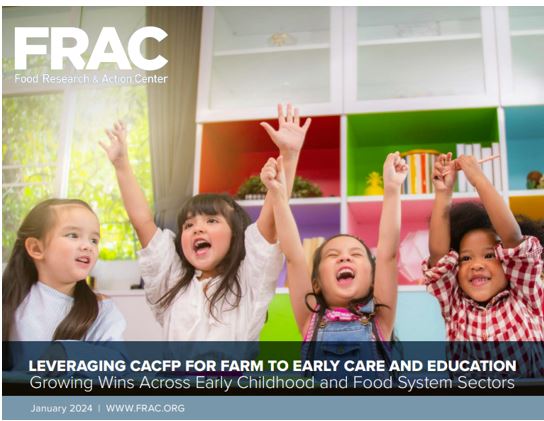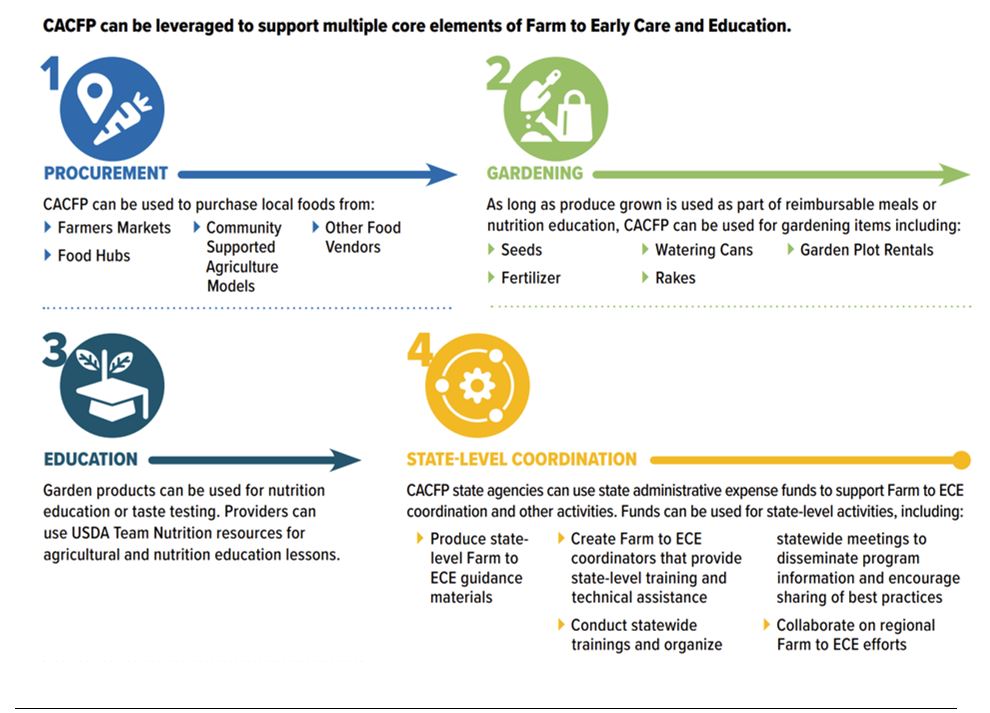March 11, 2024
This week, March 10–16, is CACFP Week!
The Food Research & Action Center (FRAC) is joining the National CACFP Sponsors Association and other partners in raising awareness and celebrating the important role this program plays in combatting hunger and bringing healthy foods to children in child care homes, centers, and afterschool programs across the country.
What CACFP Does
- The Child and Adult Care Food Program (CACFP) provides federal reimbursements to provide nutritious meals and snacks at child care and afterschool programs.
- The healthy food provided by CACFP makes a substantial contribution towards meeting the nutritional needs of children in child care, particularly children from households with low incomes.
- By paying for nutritious meals and snacks for eligible children enrolled at participating child care centers, family child care homes, and afterschool programs, CACFP plays an important role in improving the quality of child care programs and in making them more affordable for parents with low incomes.
Expanding the Reach of CACFP
Unfortunately, healthy CACFP meals and snacks are out of reach for millions of young children in child care. Across the nation, half of the family child care homes operate without CACFP support, and although participation in CACFP among child care centers has increased, not all eligible children have access to the program.
Congress can strengthen and expand CACFP through the following identified strategies:
- allow an additional healthy meal or snack for children in child care;
- add 10 cents reimbursement to eligible meals and snacks in child care, Head Start, at-risk, afterschool, and adult care CACFP;
- eliminate the two-tier system for family child care in CACFP;
- improve reimbursement rate adjustments for child care home providers, making sure reimbursements keep up with the cost of providing a healthy CACFP meal; and
- streamline participation for parents and providers by moving to annual eligibility for proprietary child care centers.
To learn more about the CACFP bills FRAC is tracking and how to get involved, click here.
Spotlight on Leveraging CACFP for Farm to Early Care and Education

When combined, CACFP and Farm to Early Care and Education (Farm to ECE) activities can have an extraordinary impact on children, child care providers, and local communities. Farm to ECE initiatives are community-based and include activities to support young children’s connections to fresh and healthy local foods and their engagement with local agriculture.
With support from the W.K Kellogg Foundation, FRAC’s new report Leveraging CACFP for Farm to Early Care and Education: Growing Wins Across Early Childhood and Food System Sectors aims to support child care providers to access CACFP and utilize it for eligible Farm to ECE activities by highlighting the mutually beneficial synergy between these initiatives. The report features templates that CACFP sponsors and providers can utilize to help streamline the processes necessary to leverage CACFP for Farm to ECE activities.
To reach more eligible children with nutritious meals and snacks in child care settings, FRAC recommends policy and regulation decision-makers, state agencies, CACFP sponsors, child care providers, local farmers and ranchers, regional food hubs, and other food system sector partners, adopt the following strategies:
- Promote awareness of CACFP and Farm to ECE through tailored outreach communications.
- Leverage CACFP State Administrative Expense Funds to provide training and technical assistance on Farm to ECE, such as producing state-level Farm to ECE guidance materials and employing a Farm to ECE coordinator.
- Advocate for and support local- and state-level local food procurement incentives for CACFP providers, including additional reimbursement for meals served that include local foods.
- Invest in local food procurement infrastructure and shared-service procurement models, such as central kitchens accessed by multiple CACFP providers.

Learn more about CACFP here.

